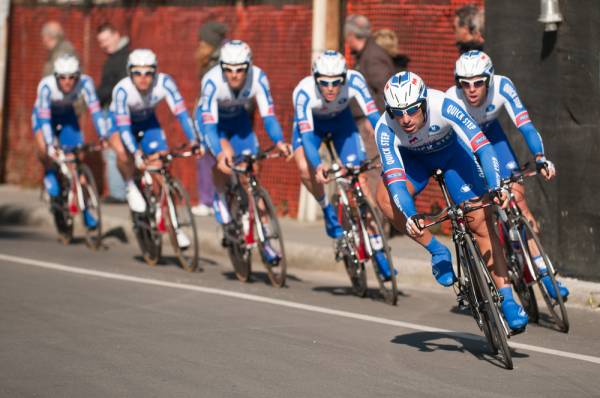Originally Posted At: https://breakingmuscle.com/feed/rss
There are many scenes in the movie Miracle, about the 1980 U.S. Olympic ice hockey team, a group of underdogs that defeated the then-Soviet Union powerhouse and went on to take home the gold, that give me goose bumps. This includes one where the team has relatively recently come together. During a training session, head coach Herb Brooks repeatedly asks the players, “Who do you play for?” Each player, in turn, responds with his own alma mater, and this results in the new team being forced to run sprint after sprint on the ice until they are beyond exhausted.
It isn’t until eventual team captain Mike Eruzione finally responds, “I play for the United States of America!” that Brooks ends the sprints. With this statement, Eruzione provided the evidence Brooks had been looking for that the players were starting to identify themselves as part of a defined group, that they prioritized their new group membership more than their individual histories. (At that point, they probably prioritized no more sprints over absolutely anything else, but they got the message.)
Athletes of every stripe are called upon to be part of a group, whether they play a team sport or compete individually. Ideally they identify with the group and demonstrate a sense of belonging and loyalty such that the group itself develops an identity in addition to the athletes’ identity as part of it. The cultivation of that group identity may go a long way toward the development of trust and rapport, which are necessary for effective practice and performance in individual and team sports alike. This means it behooves coaches and athletes to understand the implications of those dynamics and make sure they are positive.
While coaches and teammates communicate overtly with one another and work toward stated, ostensibly shared goals, the experience of working and learning with a group can also bring with it a phenomenon educators call the “hidden curriculum.” This refers to the lessons, habits of mind, and accepted behaviors any members of a group – a class, a cohort, a team – pick up indirectly, by observation or other tacit methods. In other words, the stated goals of any group might be only part of what a teammate learns and comes to accept as appropriate. For example, a new team member might hear locker room talk among more seasoned teammates and intuit certain things from this about what it takes to get along and belong.
 If the hidden curriculum reinforces the overt goals of the team, it could be a good thing. On the other hand, if the hidden curriculum undermines or detracts from these goals, disruption can result. As coaches, we must be aware of the existence of these more covert dynamics as well as the effect they may have on our coaching and our athletes’ behavior and mindsets.
If the hidden curriculum reinforces the overt goals of the team, it could be a good thing. On the other hand, if the hidden curriculum undermines or detracts from these goals, disruption can result. As coaches, we must be aware of the existence of these more covert dynamics as well as the effect they may have on our coaching and our athletes’ behavior and mindsets.
To get a handle on the hidden curriculum that may be at work in your own training situation, and the effect it is having on the cohesion of your group, consider the following when observing interpersonal dynamics and interactions:
- Who are the de facto leaders in the group – who has influence over others’ behavior? Are these the people you have designated as the leaders? If not, would it behoove you to intervene to ensure consistent messages?
- What messages ARE being communicated, both overtly and covertly? Are the covert messages consistent with or undermining the overt messages?
- How does your own behavior play into the dynamics of the group? Do you convey your own expectations clearly and abide by them yourself?
When you start to pay attention to the dynamics of a group and the hidden curriculum that may be at play, you might find opportunities to ensure consistency of messages and expectations. Here are a few steps you can take to promote group cohesion:
- Hold regular meetings with team captains and other de facto leaders, both to make sure they understand expectations and also to learn about any issues that might need intervention. Solicit their input about effective ways to intervene – they will have an understanding of the players that will complement your own perspective.
- Group athletes for training and workouts, and switch up the combinations regularly so the same people are not always working together.
- Pair new members with a more experienced teammate to help with orientation to the team.
Group dynamics and the hidden curriculum can be powerful influences on the effectiveness of a team. With a bit of awareness and a few simple steps, coaches can increase the likelihood that these influences are positive ones.
Photos courtesy of Shutterstock.
The post What Coaches Need to Know about Group Dynamics and the Hidden Curriculum appeared first on Breaking Muscle.
Filed under: Fitness

 For now classes are 6pm and 640pm at 2840 Wildwood st in the Boise Cloggers studio.
Book your class NOW!
click this ==>
For now classes are 6pm and 640pm at 2840 Wildwood st in the Boise Cloggers studio.
Book your class NOW!
click this ==>








